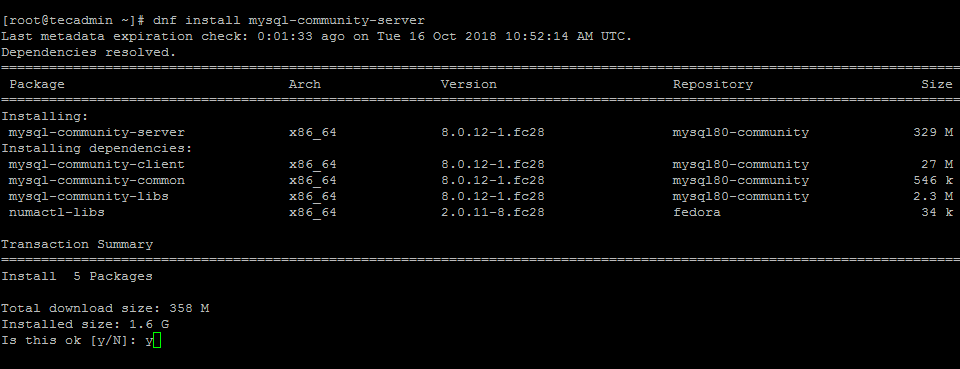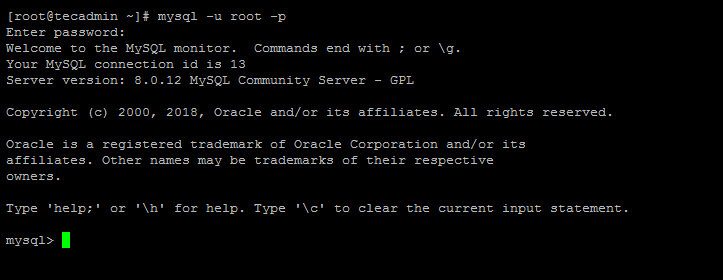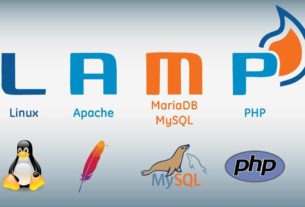Contents:
MySQL is a relational database management system. MySQL 8 is the latest version available for the installation. This tutorial will help you to install MySQL 8.0 on Fedora systems.
Step 1 – Prerequsiteis
Login to your Fedora system and open a terminal. Now upgrade the current packages to the latest version by running the following command.
sudo dnf update
Step 2 – Setup Yum Repository
The MySQL team officially provides yum repository for the installation of MySQL community server on a Fedora systems. Create a new yum repository file using the content below:
vim /etc/yum.repos.d/mysql-community.repo
File: /etc/yum.repos.d/mysql-community.repo
[mysql80-community] name=MySQL 8.0 Community Server baseurl=http://repo.mysql.com/yum/mysql-8.0-community/fc/$releasever/$basearch/ enabled=1 gpgcheck=1 gpgkey=file:///etc/pki/rpm-gpg/RPM-GPG-KEY-mysql
Save file and close.
Step 3 – Install MySQL Server
Now, run the following command to install the mysql-community-server packages on your Fedora system. This will also install all other required dependencies on your system.
sudo dnf install mysql-community-server
sudo systemctl enable mysqld.service sudo systemctl start mysqld.service
Now, follow the post-installation instructions.
Step 4 – MySQL Post Installation Setup
The MySQL community server has been installed on your system. The installer will also generate a random password and set for the root user. You can find root user password in log files.
grep 'A temporary password is generated' /var/log/mysqld.log | tail -1
2018-10-16T11:49:31.216147Z 1 [Note] A temporary password is generated for [email protected]: ,yJrusM58kW7
Now run the following command to apply security on MySQL server. Simply execute below command and follow the security wizard.
sudo mysql_secure_installation
Follow the onscreen instructions. Change your root account password and Press Y for all other operations to apply improved security.
Change the password for root? – Press y and change root password Remove anonymous users? Press y Disallow root login remotely? Press y Remove test database and access to it? (Press y Reload privilege tables now? Press y
[quangcao]
Step 5 – Connect MySQL Terminal
All done. You can now connect to the MySQL server using the command line. The following command will connect MySQL running on localhost as the root user. This will prompt for root account password.
mysql -u root -p
This tutorial has been tested with Fedora 28 system.




